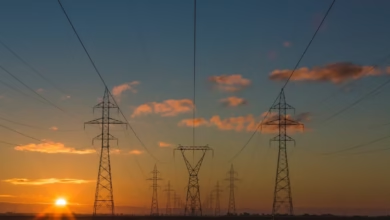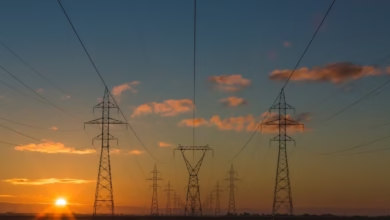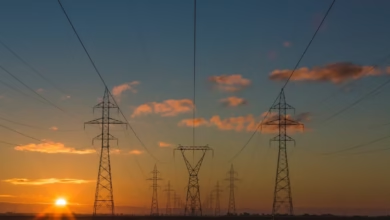Ensuring Energy Security: Innovations and Strategies for a Reliable Energy Supply in a Changing Landscape

Energy security has become a critical concern for nations worldwide as the demand for a stable and reliable energy supply intensifies amidst shifting global dynamics. With the impact of climate change, fluctuating energy markets, and the urgent need for a transition to greener alternatives, the journey towards achieving energy security is more complex than ever. This article delves into the multifaceted nature of energy security, highlighting the vital role of renewable energy sources such as solar power, wind energy, and hydropower in strengthening energy resilience. We will explore innovative trends and technologies that enhance energy efficiency and reliability, particularly through advancements in energy storage and smart grids. Furthermore, we will analyze the balancing act between fossil fuels and nuclear energy, emphasizing strategies that ensure a dependable energy supply while meeting climate goals. As we navigate the evolving landscape of energy economics and energy policy, it is crucial to understand how energy investments and R&D can drive the transition to a sustainable energy future. Join us as we unpack these pressing issues and uncover the pathways to robust energy security in today's interconnected world.
- 1. The Role of Renewable Energy in Strengthening Energy Security: Trends and Innovations
- 2. Balancing Fossil Fuels and Nuclear Energy: Strategies for a Reliable Energy Supply
- 3. Energy Storage and Smart Grids: The Future of Energy Efficiency and Security
1. The Role of Renewable Energy in Strengthening Energy Security: Trends and Innovations
The transition to renewable energy is pivotal in strengthening energy security amidst changing global energy trends and increasing concerns about climate change. As nations seek to reduce their dependence on fossil fuels, the integration of renewable energy sources such as solar power, wind energy, hydropower, and bioenergy is becoming more prevalent. These green energy options not only offer sustainable alternatives but also enhance energy resilience by diversifying energy supply.
Recent innovations in energy storage technologies are critical in addressing the intermittency of renewable sources. Advanced battery systems and other thermal energy storage solutions allow for the accumulation of surplus energy generated during peak production times, ensuring a reliable energy supply even when demand fluctuates. This capability is especially important for energy markets that are increasingly leaning towards distributed energy systems, where local generation can reduce reliance on centralized fossil fuel sources.
Moreover, the development of smart grids plays a significant role in optimizing energy efficiency and managing the flow of electricity from various renewable sources. By utilizing data analytics, smart grids can enhance energy transportation, predict energy demand, and balance loads more effectively, contributing further to energy security. The integration of electric vehicles into this framework can also help stabilize energy systems, as they can serve as mobile energy storage units.
Innovations in hydrogen energy and carbon capture technologies are also making strides in the energy transition. Hydrogen, produced from renewable sources, offers a promising pathway for decarbonizing various sectors, while carbon capture can mitigate the emissions from existing fossil fuel infrastructure. These advancements not only align with evolving energy policy frameworks but also support the global shift towards cleaner energy exports and imports.
Investment in energy R&D remains crucial for driving these innovations forward. Countries prioritizing energy investments, particularly in renewable infrastructure and technology, can enhance their energy security while fostering economic growth. As nations navigate the complexities of energy economics, balancing energy imports and exports with a focus on sustainability will be vital.
In summary, the shift towards renewable energy sources, combined with technological innovations and supportive energy policies, is essential for ensuring a stable and reliable energy supply. By embracing these trends, countries can not only enhance their energy security but also contribute to a more sustainable and resilient global energy future.
2. Balancing Fossil Fuels and Nuclear Energy: Strategies for a Reliable Energy Supply
As the world continues to navigate the complexities of energy security, balancing fossil fuels and nuclear energy emerges as a pivotal strategy for ensuring a stable and reliable energy supply. The integration of these energy sources not only supports energy security but also facilitates the transition toward greener alternatives, aligning with global energy trends.
Fossil fuels have long been the backbone of energy markets, providing the necessary power to meet growing demand. However, their environmental impact and contribution to climate change necessitate a shift towards cleaner energy solutions. Nuclear energy presents a viable alternative, offering a low-carbon option that can produce large amounts of electricity consistently. By harnessing the power of nuclear energy, countries can reduce their dependence on fossil fuels, thus enhancing energy efficiency and security.
To achieve a balanced energy mix, governments must implement robust energy policies that encourage investment in both fossil fuel and nuclear technologies. This includes enhancing energy storage solutions to manage supply and demand effectively, ensuring that surplus energy can be stored for use during peak consumption periods. Smart grids can play a crucial role in this regard, enabling real-time monitoring and management of energy flow, which optimizes the use of various energy sources, including renewable energy like solar power and wind energy.
Furthermore, the integration of distributed energy systems, such as microgrids, can complement the existing infrastructure by incorporating renewable sources like hydropower and bioenergy. This diversification not only bolsters energy security but also mitigates the risks associated with energy imports and exports.
Investment in energy R&D is essential for advancing technologies like carbon capture and hydrogen energy, which can further enhance the sustainability of fossil fuel use. By focusing on energy innovations, we can develop cleaner methods of utilizing fossil fuels while maximizing the benefits of nuclear energy.
Ultimately, a balanced approach that leverages the strengths of fossil fuels and nuclear energy, while progressively transitioning towards renewable energy sources, will fortify energy security and pave the way for a sustainable energy future. This strategic balance is imperative for addressing the challenges posed by climate change and meeting the energy needs of a growing global population.
3. Energy Storage and Smart Grids: The Future of Energy Efficiency and Security
Energy storage and smart grids are pivotal to enhancing energy efficiency and security in an era increasingly dominated by global energy trends and the need for sustainable practices. As we transition from traditional fossil fuels to renewable energy sources like solar power, wind energy, and hydropower, the ability to store energy effectively becomes crucial. Energy storage technologies, such as batteries and thermal energy storage, allow for the capture of energy generated during peak production times, which can then be utilized during periods of high demand or low generation.
Smart grids represent an evolution in energy transportation and distribution, integrating advanced technologies and data analytics to optimize energy efficiency. They enable real-time monitoring and management of energy flows, allowing for better integration of distributed energy resources, including bioenergy and hydrogen energy. By fostering a two-way communication pathway between energy providers and consumers, smart grids enhance energy security by improving demand response capabilities and reducing the risks associated with energy imports and exports.
The synergy between energy storage and smart grids is vital in addressing the challenges posed by climate change and the growing reliance on green energy. As energy markets evolve, investments in energy R&D and innovative technologies will play a crucial role in facilitating the energy transition. For instance, carbon capture technologies can complement renewable energy efforts, ensuring that even while we shift away from fossil fuels, we can mitigate the environmental impacts associated with existing energy systems.
Furthermore, the rise of electric vehicles (EVs) presents both challenges and opportunities for energy systems. Smart grids can manage the increased energy load from EV charging, while energy storage solutions can provide the necessary flexibility to accommodate the fluctuating demands of an electrified transportation sector. By harnessing these innovations, we can create a more resilient energy infrastructure that not only meets current needs but also anticipates future demands.
In summary, the combination of energy storage and smart grids is essential for achieving a secure, efficient, and sustainable energy future. As countries implement energy policies that prioritize renewable energy and energy efficiency, the integration of these technologies will be key to ensuring a reliable energy supply in the face of ongoing climate challenges and evolving energy economics.
In conclusion, ensuring energy security in an increasingly complex global landscape requires a multifaceted approach that embraces both innovation and sustainability. As we have explored, renewable energy plays a pivotal role in strengthening energy security by reducing reliance on fossil fuels and offering cleaner alternatives such as solar power, wind energy, hydropower, and bioenergy. Balancing these renewable sources with fossil fuels and nuclear energy is essential for developing a resilient energy supply that meets current demands while paving the way for a successful energy transition.
Moreover, advancements in energy storage and smart grids are pivotal in enhancing energy efficiency and reliability. These technologies not only facilitate the integration of distributed energy systems but also optimize energy transportation and management, ensuring that energy markets can adapt to changing conditions. As we face challenges posed by climate change and fluctuating energy imports and exports, the need for robust energy policies and strategic energy investments becomes increasingly critical.
By focusing on energy innovations, such as carbon capture and hydrogen energy, we can create a sustainable energy future that aligns with global energy trends and economic principles. It is imperative that governments, businesses, and individuals work together to implement these strategies, support energy R&D, and embrace the potential of offshore energy and electric vehicles. Ultimately, achieving energy security is not just about maintaining a stable supply; it is about creating a resilient, efficient, and sustainable energy landscape that benefits future generations.





